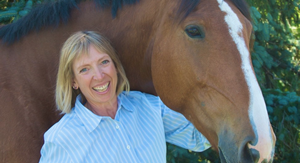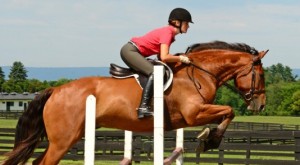Wendy Murdoch, MS, GCFP, MBS Master Practitioner
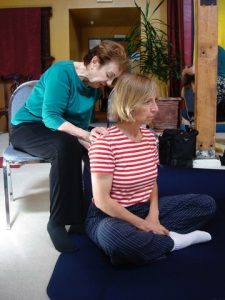
Wendy graduated from the 4-year training as a Guild Certified Feldenkrais Practitioner® (GCFP) in 2004. She continued her post-graduate training with Mia Segal, MBS Academy. Mia was Dr. Moshe Feldenkrais’ assistant for 15 years prior to his development of Practitioner Training started in the ’70s. After completing the post-graduate courses, Wendy continued her studies and graduated from the MBS Master Practitioner training. In a desire to have more riding instructors trained in the Feldenkrais Method Wendy took the 3-year MBS Foundation Training in Bad Tolz, Germany along with four other riding instructors.
Wendy believes that the Feldenkrais Method, which is designed to restore, renew or create new neural pathways, and thus express more graceful and efficient movements, is the key to understanding our own body and having clear communication with the horse. When we can use ourselves in the way we are designed so too the horse, thus we can achieve the desired goal of harmony in the saddle.
Wendy thinks that an in-depth explanation of the nature of the method is important for people curious about the Method as she now integrates it into all of her teachings.
What is the Feldenkrais Method?
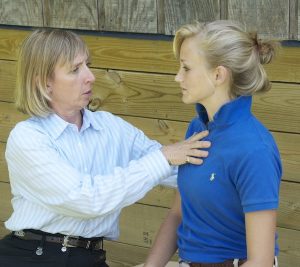
Preface
1. Any attempt to write a definition of the Feldenkrais Method might be seen as producing a somewhat static description of a highly fluid and dynamic method. Feldenkrais® practitioners/teachers continually evolve their understanding and practice of the Method and in offering definitive statements about the work one must not lose perspective of dynamism and evolution. This information should be interpreted in this light.
2. Innovation and growth in this field are valued, especially when based on a solid foundation of understanding, sensitivity, and skill embodied in the Method’s present form. As valid innovations become accepted in the Feldenkrais community, these standards will be changed accordingly
3. The Feldenkrais Method assumes that human beings have transformational potential and that all people, regardless of their age or condition, have the ability to learn.
4. Moshe Feldenkrais wrote in Higher Judo,
“In a perfectly matured body which has grown without great emotional disturbances, movements tend gradually to conform to the mechanical requirements of the surrounding world. The nervous system has evolved under the influence of these laws and is fitted to them. However, in our society we do, by the promise of great reward or intense punishment, so distort the even development of the system, that many acts become excluded or restricted. The result is that we have to provide special conditions for furthering adult maturation of many arrested functions. The majority of people have to be taught not only the special movements of our repertoire but also to reform patterns of motions and attitudes that should never have been excluded or neglected.”
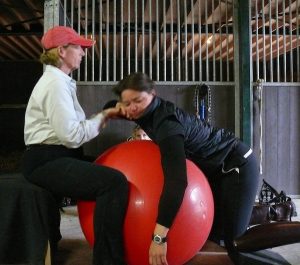
What is the Feldenkrais Method?
1. The Feldenkrais Method is an educational system that develops a functional awareness of the self in the environment. The Method utilizes the fact that the body is the primary vehicle for learning.
2. The Feldenkrais Method is an approach to working with people which expands their repertoire of movements, enhances awareness, improves function, and enables people to express themselves more fully.
3. The Feldenkrais Method directly addresses the question of how to facilitate the learning that is necessary for organizing the whole self and recovering excluded and unconsidered movement patterns or actions.
4. This is done by expanding the self-image through movement sequences that bring attention to the parts of the self that are out of awareness and uninvolved in functional actions. Better function is evoked by establishing an improved dynamic relationship between the individual, gravity, and society. Feldenkrais, himself, defined function as the interaction of the person with the outside world or the self with the environment.
5. The Method enables people to include, in their functioning, movements, and parts of the body unconsidered, forgotten, or excluded from their habitual actions or images of actions. By allowing people to learn how their whole body cooperates in any movement, the Feldenkrais Method assists people to live their lives more fully, efficiently, and comfortably.
6. The improvement of physical functioning is not necessarily an end in itself. Such improvement is based on developing a broader functional awareness which is often a gateway to more generalized enhancement of physical functioning in the context of one’s environment and life.
7. The Feldenkrais Method is based on self-organization and self-regulation in learning.
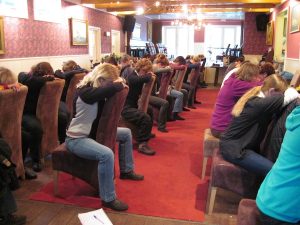
8. The Feldenkrais Method is expressed in two parallel forms: Awareness Through Movement® (ATM) and Functional Integration® (FI).
9. Awareness Through Movement consists of verbally directed movement sequences presented primarily to groups. There are several hundred hours of Awareness Through Movement lessons. A lesson generally lasts from thirty to sixty minutes. Each lesson is usually organized around a particular function.
10. In Awareness Through Movement lessons, people engage in precisely structured movement explorations that involve thinking, sensing, moving, and imagining. Many are based on developmental movements and ordinary functional activities. Some are based on more abstract explorations of joint, muscle, and postural relationships. The lessons consist of comfortable, easy movements that gradually evolve into movements of greater range and complexity. There are hundreds of Awareness Through Movement lessons contained in the Feldenkrais Method that vary, for all levels of movement ability, from simple in structure and physical demand to more difficult lessons.
11. Awareness Through Movement lessons attempt to make one aware of this/her habitual neuromuscular patterns and rigidities and to expand options for new ways of moving while increasing sensitivity and improving efficiency.
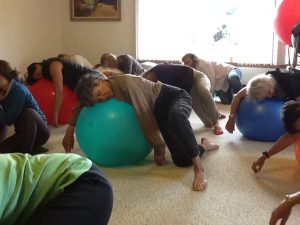
12. A major goal of Awareness Through Movement is to learn how one’s most basic functions are organized. By experiencing the details of how one performs any action, the student has the opportunity to learn how to:
-
-
- attend to his/her whole self
- eliminate unnecessary energy expenditure
- mobilize his/her intentions into actions
- learn.
-
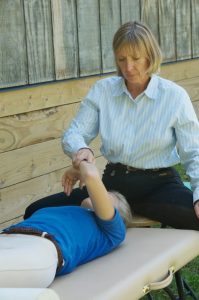
13. Functional Integration is the other form of expressing the Feldenkrais Method. Just as Feldenkrais practitioners can guide people through movement sequences verbally in Awareness Through Movement, they also guide people through movement with gentle, non-invasive touching in Functional Integration.
14. Functional Integration is a hands-on form of tactile, kinesthetic communication. The Feldenkrais practitioner communicates to the student how he/she organizes his/her body and hints, through gentle touching and movement, how to move in more expanded functional motor patterns.
15. The Functional Integration lesson should relate to a desire, intention, or need of the student. The learning process is carried out without the use of any invasive or forceful procedure. Through rapport and respect for the student’s abilities, qualities, and integrity, the practitioner/teacher creates an environment in which the student can learn comfortably.
16. In Functional Integration, the practitioner/teacher develops a lesson for the student, custom-tailored to the unique configuration of that particular person, at that particular moment. The practitioner conveys the experience of comfort, pleasure, and ease of movement while the student learns how to reorganize his/her body and behavior in new and more effective manners.
17. In Functional Integration, the practitioner/teacher’s intention is instructive and communicative.
18. Functional Integration is usually performed with the student lying on a table designed specifically for the work. It can also be done with the student in sitting or standing positions. At times, various props are used in an effort to support the person’s body configuration or to facilitate certain movements.
19. The Method is based on principles of physics, biomechanics, and an empirical understanding of learning and human development.
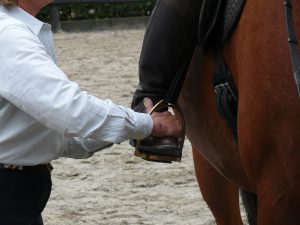
What the Feldenkrais Method is not.
-
- The Method is not a medical, massage, bodywork, or therapeutic technique. The Method is a learning process.
- The Feldenkrais practitioner has no sexual intent and does not touch the sexual or other intimate parts of a person.
- Chemical or mechanical aids are not used in the practice of the Feldenkrais Method.

